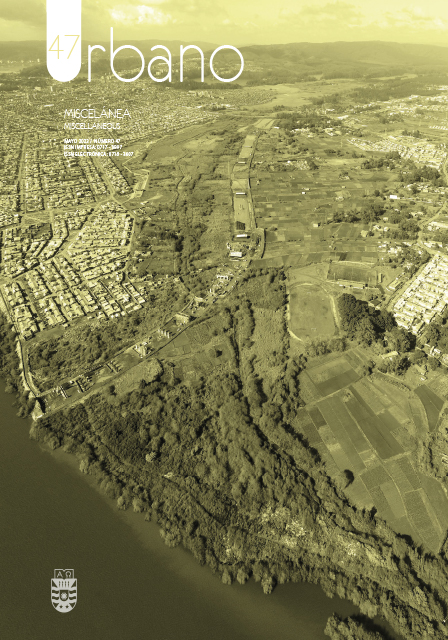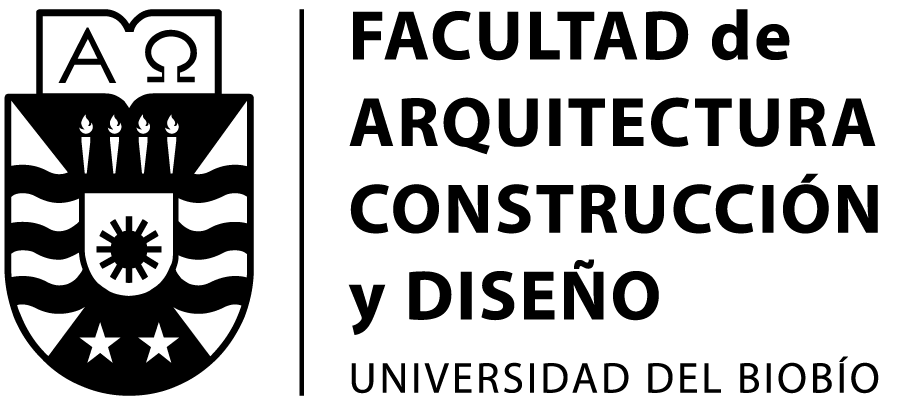Housing typologies, neighborhood perceptions, and neighborhood social ties. an examination of the Michaihue neighborhood, Metropolitan Area of Concepción, Chile
DOI:
https://doi.org/10.22320/07183607.2023.26.47.01Keywords:
progressive housing, neighborhood attachment, neighborhood social networksAbstract
Using a case study conducted in the Michaihue neighborhood, the result of progressive large-scale and high-rise social housing, the possible impact that architectural typology can have on the declared perception of neighborhood preference and predilection is analyzed, understanding these elements as a positive basis to generate neighborhood social ties. Methodologically, the responses to the dwellings and households’ CENSUS were analyzed and compared, alongside a review of personal networks applied to neighbors who own both housing typologies. The findings show that, given the same urban context and individual attributes, the housing typology marks a difference when expressing a preference for living in their neighborhood and whether or not they would choose to stay in it. However, the evidence does not allow stating whether this would affect the dynamics of neighborhood social ties production. Finally, a "progressive" architectural typology is presented, that allows the owner to participate in its modification-extension, providing better conditions for a positive perception of the neighborhood, which in itself does not necessarily alter the dynamics behind the creation and outline of neighborhood social networks.
Downloads
References
ASCHER, F. (2004). Los nuevos principios del urbanismo. Alianza.
ADGER, W.N. (2003). Social capital, collective action, and adaptation to climate change. Economic Geography, 79(4), 387–404. DOI: https://doi.org/10.1111/j.1944-8287.2003.tb00220.x
ADGER, W.N., BARNETT, J., CHAPIN, F. S. & ELLEMOR, H. (2011). This must be the place: un- derrepresentation of identity and meaning in climate change decision-making. Global Environmental Politics, 11(2), 1–25. DOI: https://doi.org/10.1162/GLEP_a_00051
AKERS, J., BEAL, V., & ROUSSEAU, M. (2019). Redefining the city and demolishing the rest: The techno-green fix in postcrash Cleveland, Ohio. Environment and Planning E:Nature and Space, 3(1), 207–227. DOI: https://doi.org/10.1177/2514848619854371
BASHAR, T., & BRAMLEY, G. (2019). Social capital and neighbourhood cooperation: Implications for development of the urban poor in LDCs. Urban Studies, 56(13), 2727–2745. DOI: https://doi.org/10.1177/0042098018797945
BOURDIEU, P. (1986). The forms of capital. In: Richardson, J.(Ed.), Handbook of Theory and Research for the Sociology of Education. Westport, CT: Greenwood, 241–58.
BOURDIEU, P. (1999). La economía de los bienes simbólicos en: Bourdieu Pierre, Razones prácticas. Sobre la teoría de la acción, Barcelona: Anagrama, 159-198.
BLOKLAND, T. (2017). Community as urban practice. John Wiley & Sons. (1st ed).
BONAIUTO, M., ALVES, S., DE DOMINICIS, S. & PETRUCCELLI, I. (2016). Place attachment and natural hazard risk: research review and agenda. Journal Of Environmental Psychology, 48, 33–53. DOI: https://doi.org/10.1016/j.jenvp.2016.07.007
BOTT, L. M. & BRAUN, B. (2019). How do households respond to coastal hazards? A framework for accommodating strategies using the example of Semarang Bay, Indonesia. International Journal Of Disaster Risk Reduct, 37, 101177. DOI: https://doi.org/10.1016/j.ijdrr.2019.101177
BOTT, L. ANKEL, L. & BRAUN. B. (2019). Adaptive neighborhoods: The interrelation of urban form, social capital, and responses to coastal hazards in Jakarta. Geoforum, 106, 202-213. DOI: https://doi.org/10.1016/j.geoforum.2019.08.016
BRAUN, B. & AßHEUER, T., (2011). Floods in megacity environments: vulnerability and coping strategies of slum dwellers in Dhaka/Bangladesh. Natural Hazards, 58(2), 771–787. DOI: https://doi.org/10.1007/s11069-011-9752-5
BUSTOS-PEÑAFIEL, M. A. (2020). Desafíos para enfrentar el deterioro de una producción cuantitativa. Vivienda social en copropiedad en Chile”. Bitácora Urbano Territorial, 30(3), 247-261. DOI: https://doi.org/10.15446/bitacora.v30n3.86821
CLARKE, D., MURPHY, C. & LORENZONI, I. (2018). Place attachment, disruption and transformative adaptation. Journal Of Environmental Psychology, 55, 81–89. DOI: https://doi.org/10.1016/j.jenvp.2017.12.006
COOKE, B. (2020). The politics of urban greening: An introduction. Australian Geographer, 51(2), 137–153. DOI: https://doi.org/10.1080/00049182.2020.1781323
DAI, D. (2011). Racial/ethnic and socioeconomic disparities in urban green space accessibility: Where to intervene?. Landscape and Urban Planning, 102(4), 234-244. DOI: https://doi.org/10.1016/j.landurbplan.2011.05.002
FONG, P., CRUWYS, T., HASLAM, C., & HASLAM, S. A. (2019). Neighbourhood identification and mental health: How social identification moderates the relationship between socioeconomic disadvantage and health. Journal of Environmental Psychology, 61, 101-114. DOI: https://doi.org/10.1016/j.jenvp.2018.12.006
DOVEY, K. & WOOD, S. (2015). Public/private urban interfaces: type, adaptation, assemblage. Journal of Urbanism: International Research on Placemaking and Urban Sustainability, 8(1), 1-16. DOI: https://doi.org/10.1080/17549175.2014.891151
DRURY, J., & REICHER, S. (2005). Explaining Enduring Empowerment: A Comparative Study of Collective Action and Psychological Outcomes. European Journal of Social Psychology, 35(1), 35–58. DOI: https://doi.org/10.1002/ejsp.231
GREENE, M. LINK, F. MORA, R. & FIGUEROA, C. (2014). De la casa al barrio. ARQ (Santiago), 86, 78-87. DOI: https://dx.doi.org/10.4067/S0717-69962014000100012
HARTIG T, MITCHELL R., & FRUMKIN H. (2014). Annu Rev Public Health. Nature and health, 35, 207-28. DOI: https://doi.org/10.1146/annurev-publhealth-032013-182443
HIPP, JR. (2010). A Dynamic View of Neighborhoods: The Reciprocal Relationship between Crime and Neighborhood Structural Characteristics. Social Problems, 57(2), 205–230. DOI: https://doi.org/10.1525/sp.2010.57.2.205
HOUGHTON, J. (2005). Place and the implications of ‘the local’ for sustainability: An investigation of the Ugu District Municipality in South Africa. Geoforum, 36(4), 418–428. DOI: https://doi.org/10.1016/j.geoforum.2004.07.006
Instituto Nacional de Estadísticas (INE). (2002). Censo de Población y Vivienda 2002: Resultados Generales [Datos censales]. Recuperado de www.ine.gob.cl.
Instituto Nacional de Estadísticas (INE). (2017). Censo de Población y Vivienda 2017: Resultados Generales [Datos censales]. Recuperado de www.ine.gob.cl.
KELLY, D., DAVERN, M., FARAHANI, L., HIGGS, C. & MALLER, C. (2022). Urban greening for health and wellbeing in low-income communities: A baseline study in Melbourne, Australia. Cities, 120, 103442. DOI: https://doi.org/10.1016/j.cities.2021.103442
KRELLENBERG, K., WELZ, J. & REYES-PÄCKE, S. (2014). Urban green areas and their potential for social interaction e A case study of a socio-economically mixed neighbourhood in Santiago de Chile. Habitat International, 44, 11-21. DOI: https://doi.org/10.1016/j.habitatint.2014.04.004
LEITNER, H. & SHEPPARD, E. (2018). From Kampungs to Condos? Contested accumulations through displacement in Jakarta. Environment and Planning A: Economy and Space, 50(2), 437–456. DOI: https://doi.org/10.1177/0308518X17709279
LELÉVRIER, C. (2013). Social mix neighbourhood policies and social interaction: The experience of newcomers in three new renewal developments in France. Cities, 35, 409-416. DOI: https://doi.org/10.1016/j.cities.2013.03.003
LIN, C. & LOCKWOOD, M. (2014). Forms and sources of place attachment: Evidence from two protected areas. Geoforum, 53, 74–81. DOI: https://doi.org/10.1016/j.geoforum.2014.02.008
LINK, F., VALENZUELA, F. & FUENTES, L. (2015). Segregación, estructura y composición social del territorio metropolitano en Santiago de Chile: Complejidades metodológicas en el análisis de la diferenciación social en el espacio. Revista de geografía Norte Grande, 62, 151-168. DOI: https://dx.doi.org/10.4067/S0718-34022015000300009
LINK, F., SEÑORET, A. & FIGUEROA, C. (2022). Del barrio al conjunto: Espacio público y sociabilidad en la vivienda social de Santiago. Revista INVI, 37(106), 49-72. DOI: https://dx.doi.org/10.5354/0718-8358.2022.67125
LINK, F., SEÑORET, A. & VALENZUELA, F. (2022). From community to public familiarity: Neighborhood, sociability, and belonging in the neoliberal city. Urban Affairs Review, 58(4), 960-995. DOI: https://doi.org/10.1177/10780874211021512
LU, T., ZHANG, F. & WU, F., (2018). Place attachment in gated neighbourhoods in China: evidence from Wenzhou. Geoforum, 92, 144–151. DOI: https://doi.org/10.1016/j.geoforum.2018.04.017
MARSHALL, N.A., PARK, S.E., ADGER, W.N., BROWN, K. & HOWDEN, S.M. (2012). Transformational capacity and the influence of place and identity. Environmental Research Letters, 7(3), 034022. DOI: https://doi.org/10.1088/1748-9326/7/3/034022
MÉNDEZ, M. L., OTERO, G., LINK, F., LÓPEZ MORALES, E. & GAYO, M. (2020). Neighbourhood cohesion as a form of privilege. Urban Studies, 58(8), 1691-1711. DOI: https://doi.org/10.1177/0042098020914549
MOUNT, M. & CABRAS, I. (2015). Community cohesion and village pubs in Northern England: an econometric study. Regional Studies, 50(7), 1203–1216. DOI: https://doi.org/10.1080/00343404.2014.989150
OTERO, G., MÉNDEZ, M. L., LINK, F., LOPEZ MORALES, E. & GAYO, M. (2021). Neighbourhood cohesion as a form of privilege. Urban Studies, 58(8), 1691-1711. DOI: https://doi.org/10.1177%2F0042098020914549
PETERS, K., ELANDS, B. & BUIJS, A. (2010). Social interactions in urban parks: Stimulating social cohesion?. Urban Forestry and Urban Greening, 9(2), (93-100). DOI: https://doi.org/10.1016/j.ufug.2009.11.003
PINCHAK, N. P., BROWNING, C. R., CALDER, C. A., & BOETTNER, B. (2021). Activity locations, residential segregation and the significance of residential neighbourhood boundary perceptions. Urban Studies, 58(13), 2758–2781. DOI: https://doi.org/10.1177/0042098020966262
SEÑORET, A. & LINK, F. (2019). Densidad urbana, forma y sociabilidad en la ciudad neoliberal: el caso del barrio Santa Isabel en Santiago de Chile. Revista De Urbanismo, 41, 1-17. DOI: https://doi.org/10.5354/0717-5051.2019.52862
SMALL, M. L., & ADLER, L. (2019). The role of space in the formation of social ties. Annual Review of Sociology, 45, 111-132. DOI: https://doi.org/10.1146/annurev-soc-073018-022707
SIMMEL, G. (2014). Sociología: Estudios de las formas de socialización. Fondo de Cultura Económica.
SOJA, E. (2009) Thirdspace: Toward a new consciousness of space and spatiality. En Ikas, K. & Wagner, G. (Eds.). Communicating in the third space (1st ed.). Nueva York: Routledge.
TALEN, E. (1999). Sense of Community and Neighborhood Form: An Assessment of the Social Doctrine of New Urbanism. Urban Studies, 36(8), 1361–1379. DOI: https://doi.org/10.1080/0042098993033
ULMER, J. M., WOLF, K. L., BACKMAN, D. R., TRETHEWAY, R. L., BLAIN, C. J. A., O’NEIL- DUNNE, J. P. M. & FRANK, L. D. (2016). Multiple health benefits of urban tree canopy: The mounting evidence for a green prescription. Health & Place, 42, 54–62. DOI: https://doi.org/10.1016/j.healthplace.2016.08.011
VALENTINE, G. (2008). Living with difference: reflections on geographies of encounter. Progress in human geography, 32(3), 323-337. DOI: https://doi.org/10.1177/0309133308089372
WANG, M., & VERMEULEN, F. (2021). Life between buildings from a street view image: What do big data analytics reveal about neighbourhood organisational vitality?. Urban Studies, 58(15), 3118–3139. DOI: https://doi.org/10.1177/0042098020957198
WATERS, J. & ADGER, W.N. (2017). Spatial, network and temporal dimensions of the determinants of adaptive capacity in poor urban areas. Global Environmental Change, 46, 42–49. DOI: https://doi.org/10.1016/j.gloenvcha.2017.06.011
WELLMAN, B., & LEIGHTON, B. (1979). Networks, Neighborhoods, and Communities: Approaches to the Study of the Community Question. Urban Affairs Quarterly, 14(3), 363–390. DOI: https://doi.org/10.1177/107808747901400305
WICKES, R., ZAHNOW, R., TAYLOR, M. & PIQUERO, A.R. (2018). Neighborhood structure, social capital, and community resilience: longitudinal evidence from the 2011 Brisbane flood disaster. Social Science Quarterly, 96 (2), 330–353. DOI: https://doi.org/10.1111/ssqu.12144
WOOD, L. & GILES-CORTI, B. (2008). Is there a place for social capital in the psychology of health and place?. Journal of Environmental Psychology, 28(2), 154–163. DOI: https://doi.org/10.1016/j.jenvp.2007.11.003
ZHU, Y., BREITUNG, W. & LI, S. (2012). The Changing Meaning of Neighbourhood Attachment in Chinese Commodity Housing Estates: Evidence from Guangzhou. Urban Studies, 49(11), 2439–2457. DOI: https://doi.org/10.1177/0042098011427188
Downloads
Published
How to Cite
Issue
Section
License
Copyright (c) 2023 Aarón Napadensky-Pastene, Felipe Link-Lazo

This work is licensed under a Creative Commons Attribution-ShareAlike 4.0 International License.
The content of articles which are published in each edition of Habitat Sustentable, is the exclusive responsibility of the author(s) and does not necessarily represent the thinking or compromise the opinion of University of the Bio-Bio.
The author(s) conserve their copyright and guarantee to the journal, the right of first publication of their work. This will simultaneously be subject to the Creative Commons Recognition License CC BY-SA, which allows others to share-copy, transform or create new materials from this work for non-commercial purposes, as long as they recognize authorship and the first publication in this journal, and its new creations are under a license with the same terms.![]()























